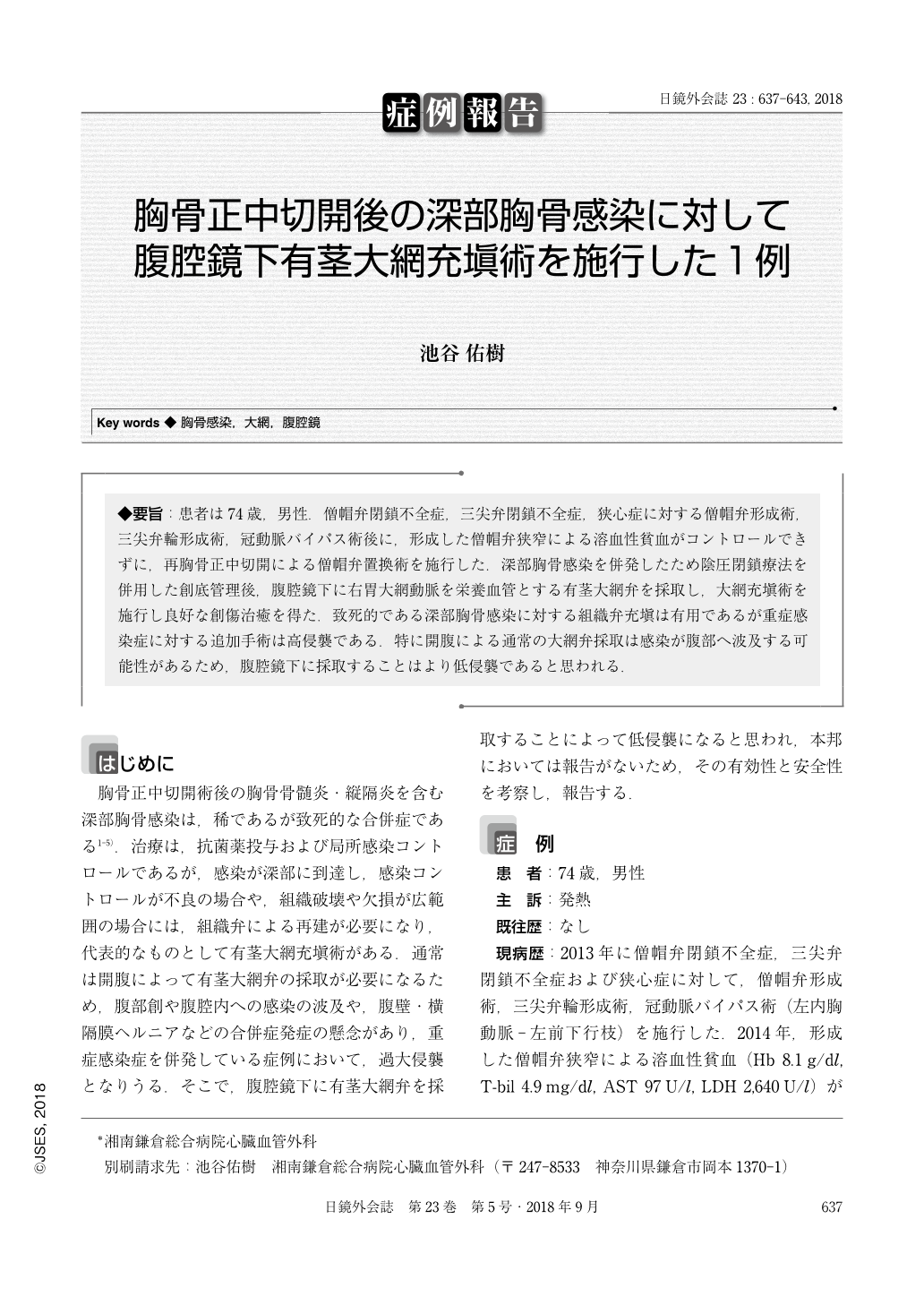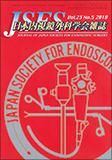Japanese
English
- 有料閲覧
- Abstract 文献概要
- 1ページ目 Look Inside
- 参考文献 Reference
◆要旨:患者は74歳,男性.僧帽弁閉鎖不全症,三尖弁閉鎖不全症,狭心症に対する僧帽弁形成術,三尖弁輪形成術,冠動脈バイパス術後に,形成した僧帽弁狭窄による溶血性貧血がコントロールできずに,再胸骨正中切開による僧帽弁置換術を施行した.深部胸骨感染を併発したため陰圧閉鎖療法を併用した創底管理後,腹腔鏡下に右胃大網動脈を栄養血管とする有茎大網弁を採取し,大網充塡術を施行し良好な創傷治癒を得た.致死的である深部胸骨感染に対する組織弁充塡は有用であるが重症感染症に対する追加手術は高侵襲である.特に開腹による通常の大網弁採取は感染が腹部へ波及する可能性があるため,腹腔鏡下に採取することはより低侵襲であると思われる.
A 74-year-old male underwent mitral valve replacement through median resternotomy for hemolytic anemia due to mitral valve stenosis after mitral valve reconstruction, tricuspid valve annuloplasty and coronary artery bypass using the left internal thoracic artery. The patient developed deep sternal wound infection. The wound was fully opened and prepared with negative pressure wound therapy following adequate debridement and irrigation. After negative culture from the wound was confirmed, a pedicled omental flap based on the right gastroepiploic artery was harvested laparoscopically. The wound and the anterior mediastinum were filled with the omental flap, and the skin was closed. The wound was well-healed without recurrent wound infections. Deep sternal wound infection remains one of the most serious complications in patients who undergo median sternotomy. The condition may require flap reconstruction to close the wound. Especially, the omental flap has the advantage of adapting to large wounds, contains a rich vascular and lymphatic supply, and allows containing infections and absorbing exudates. But additional procedures for patients with serious infection can be highly invasive and life-threatening. Harvesting of the omental flap normally necessitates a formal laparotomy often in a high-risk patient, which is associated with significant morbidity and mortality. The laparoscopic approach has the potential to decrease the physiological stress of laparotomy, and high risk of abdominal wound infection and incisional hernia. The laparoscopically harvested omental flap is a less invasive and valuable technique, and seems to offer a safe procedure in the treatment of deep sternal wound infection.

Copyright © 2018, JAPAN SOCIETY FOR ENDOSCOPIC SURGERY All rights reserved.


